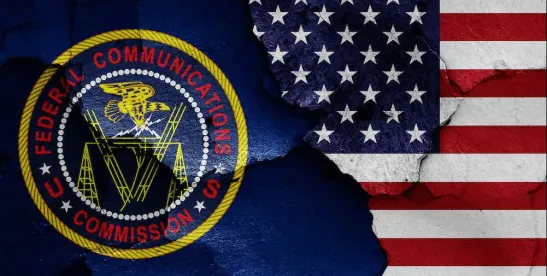At the end of last week, the Second Circuit—in a 2-1 decision—held that the D.C. Circuit’s decision in Bais Yaakov of Spring Valley v. Fed. Commc’ns Comm’n, 852 F.3d 1078 (D.C. Cir. 2017) is binding on all courts, including the Second Circuit, and that the FCC did not err by repealing the Solicited Fax Rule following the D.C. Circuit’s ruling. See Gorss Motels, Inc. v. Fed. Commc’ns Comm’n, Case No. 20-1075, 2021 U.S. App. LEXIS 35776 (2d Cir. Dec. 3, 2021). For those in TCPAWorld still using a fax machine or still dealing with TCPA litigation based on faxes, if the Solicited Fax Rule was not dead before, it likely is now.
What is the Solicited Fax Rule? Promulgated in 2006, the FCC required that solicited faxes—like unsolicited faxes—must contain opt-out instructions, which opened the floodgates on class action litigation against fax-senders. Some fax-senders sought and received retroactive waivers from the FCC, excusing violations of the Solicited Fax Rule. Others questioned the FCC’s authority to regulate solicited (as opposed to unsolicited) faxes. The FCC posted notice and invited comments on whether the Solicited Fax Rule was lawful – ultimately concluding in 2014 that it did have statutory authority to regulate solicited faxes. The FCC’s 2014 Order was challenged by a number of petitioners in multiple circuit courts under the Hobbs Act. As required by the Hobbs Act, the challenges were consolidated in one circuit (the D.C. Circuit) via a lottery. In 2017, the D.C. Circuit held that the Solicited Fax Rule was unlawful to the extent it required opt-out notices on solicited faxes. Bais Yaakov, 852 F.3d at 1083.
In light of the D.C. Circuit’s decision in Bais Yaakov, the FCC’s Wireline Competition Bureau deleted the Solicited Fax Rule from the agency’s TCPA regulations. The Bureau’s decision to remove the regulation was challenged, and the full Commission then affirmed the Bureau’s decision to delete the rule. Plaintiff then filed a petition for review of that affirmation with the Second Circuit.
The Second Circuit held that when a Hobbs Act court, like the D.C. Circuit in Bais Yaakov, invalidates an agency rule pursuant to the Hobbs Act, that ruling is binding on subsequent courts tasked with determining the regulation’s validity. “So when Bais Yaakov wound up in the D.C. Circuit via th[e] challenging device [of the Hobbs Act], that court’s adverse decision was a ruling on all of the facial challenges that could ever arise.” However, the Second Circuit expressly made clear that its opinion “should not be over-read to suggest that if a Hobbs Act court upholds a challenged order, the order is immune from challenge in subsequent enforcement proceedings. Such a result would raise due process concerns, and it does not appear that Congress contemplates such a sweeping effect.”
As to the argument that Bais Yaakov only invalidated the 2014 Order and not the 2006 Solicited Fax Rule, the Second Circuit had little problem concluding that “the Solicited Fax Rule and the 2014 Order are inextricable” because the 2014 Order interpreted and applied the Solicited Fax Rule. Accordingly, the Second Circuit held that Bais Yaakov invalidated the Solicited Fax Rule as well as the 2014 Order.
Finally, after explaining how the doctrine of nonacquiescence allows an agency to adhere to its interpretation of a statute notwithstanding a court’s or courts’ interpretation to the contrary, the Second Circuit found such doctrine foreclosed here by the Hobbs Act. “[T]he Hobbs Act establishes a ‘special statutory reviewing proceeding’ that channels all of the pre-enforcement facial challenges to an FCC order that could ever arise to a single court tasked with deciding the validity of the order. . . . If the designated court invalidates the order, it cannot be enforced by another circuit, whether or not it is removed from the books.” Accordingly, the Second Circuit found no error with the Commission’s order deleting the Solicited Fax Rule and denied the petition.
The dissent disagreed with the majority’s conclusion that the Hobbs Act creates a mechanism where a circuit court’s decision is binding on all subsequent courts that consider the same legal issues. Rather, according to the dissent, “[j]udgments in cases initiated under the Hobbs Act and consolidated pursuant to Section 2112 bind only the parties to those cases and create precedent only in the circuit where the case is decided.”
So what does this all mean? The Solicited Fax Rule is likely dead – to the extent it was not already. But of potentially greater significance is the Second Circuit’s conclusion that the Hobbs Act creates a special statutory reviewing proceeding such that a circuit court’s decision invalidating a FCC regulation or order is binding on all circuits across the country. Talk about one and done. These Hobbs Act petitions could have significant and powerful consequences depending on how they develop.




 />i
/>i

